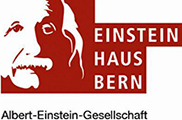Einstein Lectures 2025
Donna Strickland gave the Einstein Lectures 2025. The Canadian Nobel Prize winner Prof. Donna Strickland discussed the groundbreaking generation of ultrashort laser pulses and their use in research, medicine, and climate observation over three evenings.
About the person
Donna Strickland is a physics professor at the University of Waterloo in Canada and was awarded the Nobel Prize in Physics in 2018 together with Gérard Mourou and Arthur Ashkin for groundbreaking inventions in the field of laser physics. Donna Strickland was only the third woman to receive the Nobel Prize in Physics after Marie Curie in 1903 and Maria Goeppert Mayer in 1963, 55 years later.
Lectures 2025
Lecture 1, Monday, 20.10.2025: Generating short pulses for making molecular movies
By generating ever shorter optical pulses, we can image ever faster processes from stopping the motion of a speeding bullet to now trying to observe molecules vibrating. I will discuss how to make ultrashort optical pulses and why we need to first generate a wide range of colours to do it. I will give a few different ways that ultrafast laser scientists generate these broad colour spectra and then how we manipulate them to create short pulses. I will finish by explaining what is currently stopping my group from using these colours to generate the ultrashort pulses we want.
Lecture 2, Tuesday, 21.10.2025: Particle acceleration with intense fiber lasers for medical applications
Back in 1979 Tajima and Dawson showed theoretically that electrons could be accelerated to high energies with pulses of light, if the peak power could just reach terawatt levels, or a million times a million watts. This level of power is delivered continuously over the entire power grid of the United States so it is a lot of power. For acceleration, we don't need the laser power on all the time and in fact we want the power on only over a very short time, so it doesn't use a lot of energy. Lasers can now deliver ultrashort pulses with over 1000 times more peak power than a terawatt and so there are ongoing efforts to accelerate charged particles with these extremely high peak power laser pulses. The goal for the highest peak powers is to see if we can provide higher energy charged particles for medical applications than what is currently available in hospitals. If we can, then we could irradiate tumors located deeper in the brain. On the other hand, we are starting to use smaller less powerful pulses to determine if we can deliver energetic electrons at the end of a fiber that can be placed inside a body. If this is possible, the lower energy electrons could then irradiate the remains of a surgically removed tumor without collateral damage. In this talk, I will explain how powerful laser pulses can accelerate charged particles. I will also discuss why they are not yet appearing in hospitals and the current challenges to be overcome before we can start using these types of accelerators.
Lecture 3, Wednesday, 22.10.2025: Global Environmental Measurement and Monitoring (GEMM)
As the world reels from the disasters of flooding to forest fires, we need to learn how to better adapt to climate change. This of course is an incredible challenge that we are facing and requires a more extensive network of environmental measurements of the atmosphere, geosphere, cryosphere, hydrosphere, and biosphere than can be currently achieved. To help spur the development of needed environmental measurements, the organizations Optica and AGU launched the GEMM initiative. The GEMM initiative brings scientists and engineers working across disciplines of sensor technologies and environmental science together to develop new monitoring techniques. GEMM is also bringing together scientists and public policy makers for better communication and a more effective response to the new challenges imposed by climate change.


